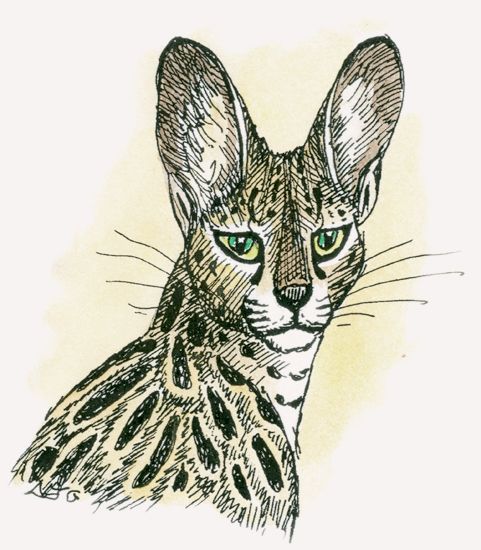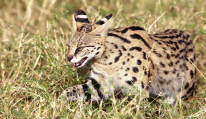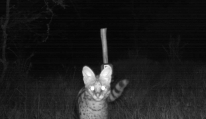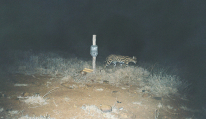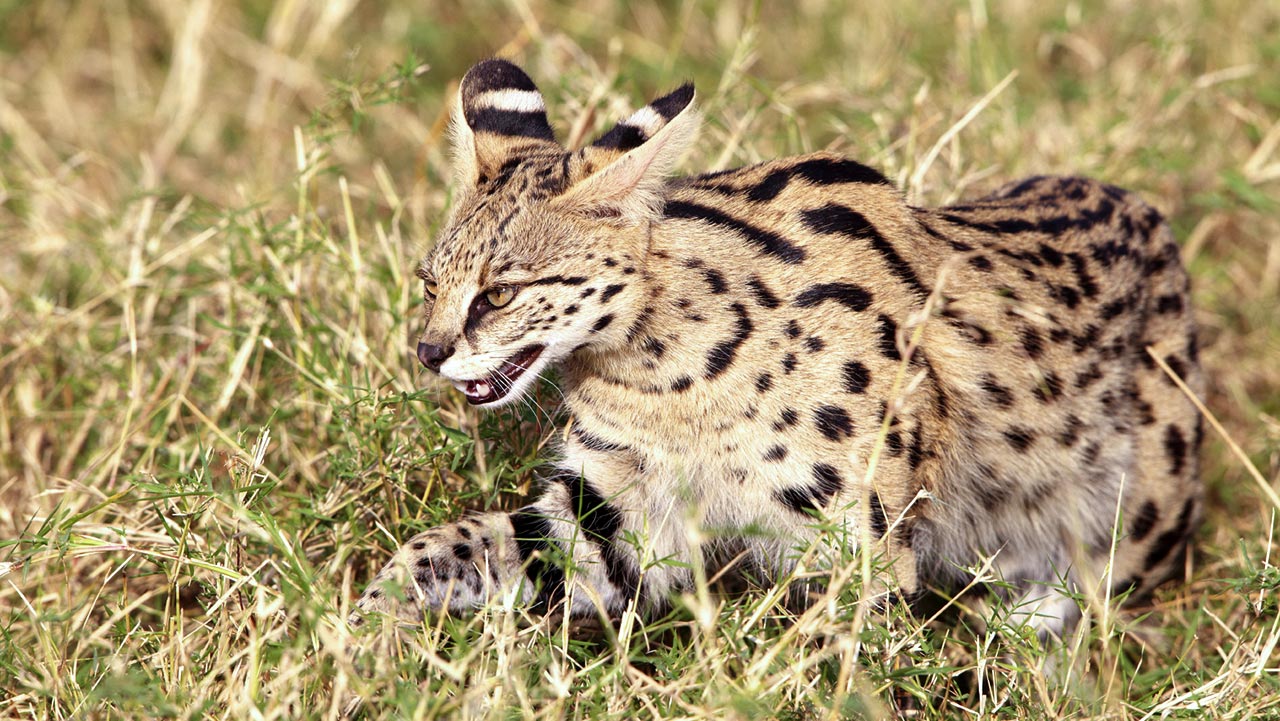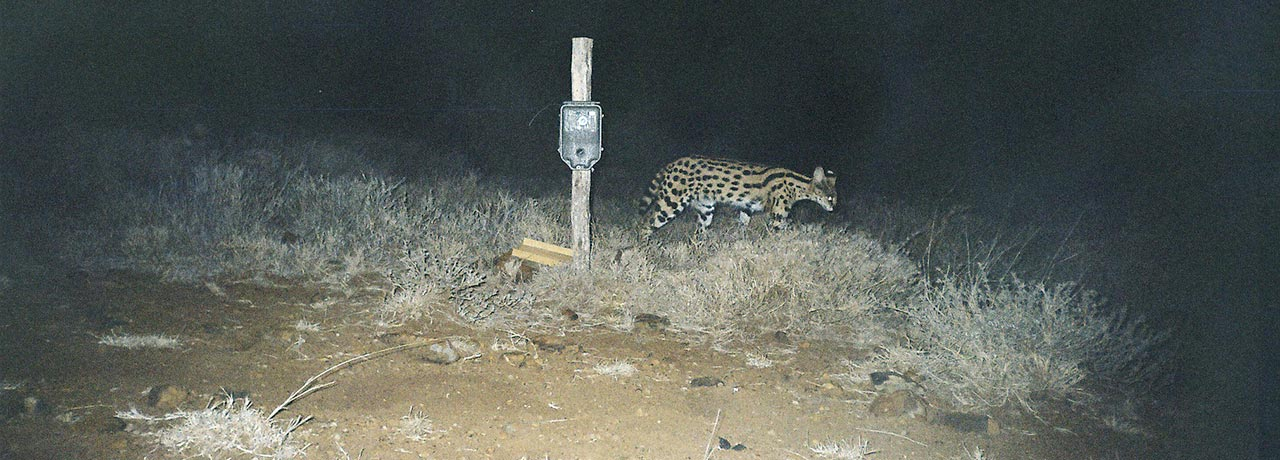Social Structure
Both male and female servals live alone, though a male may accompany a female for a few days when they are mating. Serval home ranges vary in size, but a male’s tends to be larger than a female’s. Ranges overlap, but servals avoid other individuals and don’t fight often. Only the ranges of female offspring are allowed to overlap with their mother’s home range; male offspring are pushed away by their mother and the dominant male.
Communication
Servals have highly developed hearing to help them detect prey, and they communicate using a variety of sounds, including purrs, a high-pitched meow, a nasal mwa-mwa repeated multiple times, and a low, purring growl. They greet one another with a friendly, quiet mew. To mark their ranges, servals urinate along paths and rub their faces on the ground while drooling.
Behavior
Servals are crepuscular, meaning they are most active during twilight and dawn hours. When they have kittens or are in protected areas, they adopt a more diurnal lifestyle. They spend most of their time on the ground, but will climb trees to heights of up to 30 feet (9 m). During bright, daylight hours, servals will rest under cover, rarely visiting the same resting site twice.
Conservation
Habitat degradation and decreasing numbers of small prey mammals threaten serval populations. In Nigeria,servals are used in traditional medicine, while in Senegal, Gambia, and Benin, their skins are traded heavily. However, servals remain abundant across their distribution in protected areas.

